Have you seen recent content marketing examples that have made you sit up and take notice?
Wish you had taken a note of it to emulate that campaign’s success for your company?
In this article, I aim to share the best content marketing examples from recent years.
These examples are meant to inspire marketing teams and give you the impetus to update strategies.
Content marketing has been successful for most businesses, small and large. But the ever-evolving nature of digital marketing has made content creation challenging.
Not only are content marketers tasked with creating large volumes of content, but they also need to ensure their materials are of high quality and engaging for consumers.
How can you consistently produce new ideas? By looking at what others have done and how it worked for them.
Here are 15 content marketing examples that worked for other brands that you can take inspiration from.
Augmented Reality Examples
Virtual reality was all set to take over the world a few years ago, but that hasn’t panned out. Bulky headsets and the lack of autonomy saw VR decline rapidly.
In its place has arisen augmented reality, which can be implemented through mobile apps and in existing spaces.
The augmented reality content marketing examples below should serve as excellent inspiration for the future of your content marketing strategies.
1) IKEA
One of the first practitioners of augmented reality was the Swedish furniture brand, IKEA.
They created an app that customers could use to place items of furniture in their home before buying it, which is a great way of enhancing the shopping experience.
Customers didn’t have to make endless trips to the nearest IKEA to decide which couch fit their living room best and what colors clashed or complemented.
With a few clicks on their phones, they could cycle through a number of products, see whether or not they worked in the space available, and make their purchase.
Key Takeaways
IKEA understood one important facet of their customers’ personality—everyone wants to avoid buyer’s regret.
IKEA completely took buyer’s regret out of the equation by allowing their customers to place their product in their own space.
Essentially, IKEA eliminated the need for customers to visit their store—they could shop from home for items that usually would have taken them out of the home.
You need to understand your audience and their needs. Even if you can’t implement AR in your marketing strategy, find a way to bring your product to your customer.
2) L’Oreal
Beauty brand L’Oreal’s virtual beauty experiences allow customers to try on products and take pictures to share on social media.
Not only does L’Oreal give customers the opportunity to ‘try on’ makeup, but also different hair colors.
Instead of having to risk choosing a color that may not work for them, customers see whether the color suits them before buying it.
Key Takeaways
L’Oreal’s augmented reality experience is all about try-before-you-buy, which is crucial for a cosmetic company that makes semi-permanent changes to people.
Consider offering your products and services on a trial basis to your customers, or give them a virtual experience that will encourage them to purchase your product.
Blogging Content Examples
Blogging was at the forefront of content marketing. Personal bloggers starting seeing success early on, and businesses followed suit.
It has become par for the course for businesses to include a blog on their site—marketers who were surveyed said 88% of their content marketing strategy was dedicated to blogs.
But are brands making the most of their blog’s potential?
We look at a few examples of business blogs that have seen success and what you can learn from them.
1) Neil Patel’s Blog

Most marketers will have heard of Neil Patel. Formerly of Kissmetrics, Patel has gone on to become one of marketing’s biggest influencers.
And it isn’t surprising why. His blogs provide an in-depth analysis into the world of marketing, complete with charts, graphs, statistics, and personal experiences.
Patel now also incorporates videos and podcasts on his blog, tapping into the visual marketing arena that has been gaining ground recently.
But Patel doesn’t simply create content and upload it to his blog. He also regularly replies to comments on his posts and converses with blog visitors.
Key Takeaways
So, what can you take away from Patel’s blog? The most important aspect of Patel’s blog is that he doesn’t hold back on the kind of information he has access to. He shares quite freely.
Your business blog needs to have high quality in-depth articles. A short piece has its value, but if you want to boost traffic, you need to provide your readers with data and analysis.
It is also crucial for marketers to engage with their commenters and audience. Build a community within your blog and you will see your traffic improve.
2) Shopify’s Blog
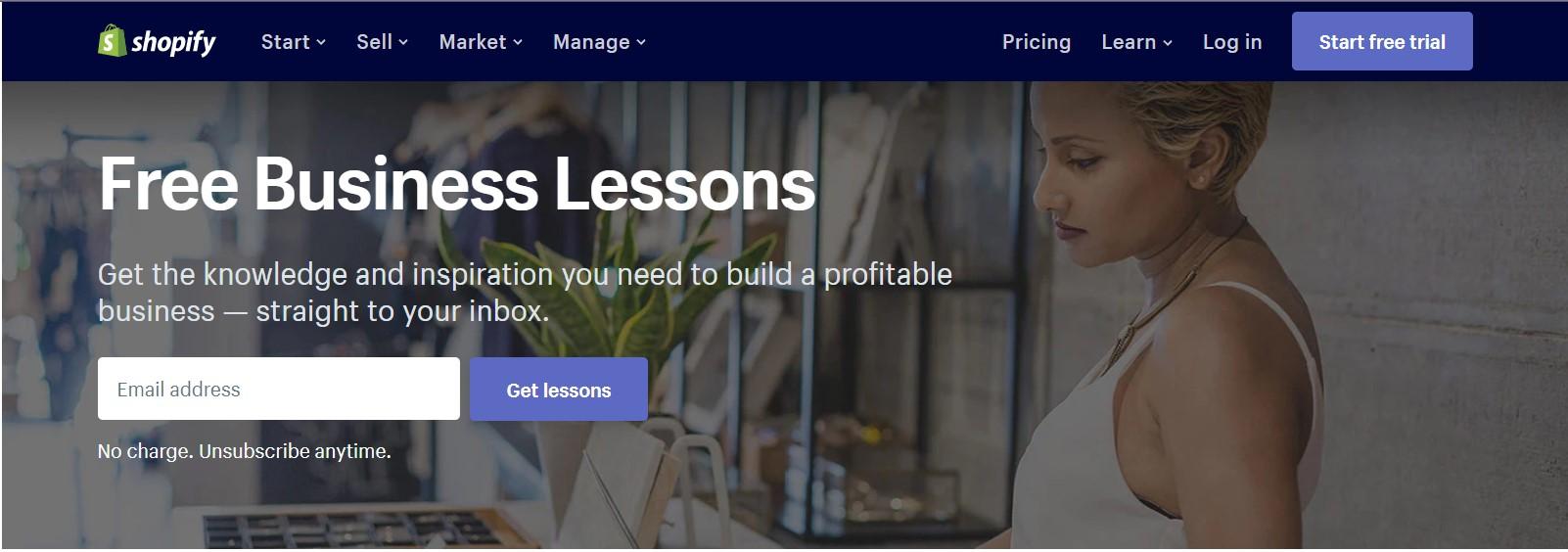
The Shopify e-commerce platform has given many a seller an avenue to reach their customers.
Shopify’s blog reflects their own journey, and the journeys of the people who sell through them.
Not only does Shopify feature successful and unique sellers, but includes tips and tricks on product photography, how to use Shopify apps , as well as entertaining pop culture content.
Key Takeaways
Despite Shopify’s niche being e-commerce, their blog hosts a variety of subjects to appeal to a wide range of readers. What Shopify does so well with its blog is understanding its audience.
Do research into what interests your audience and tailor your content accordingly. If your business isn’t niche, don’t limit your content scope.
But avoid the trap of going too broad with blog content—you don’t want to alienate your regular readers in the hopes of reaching a new audience segment.
Podcast Examples
Most businesses don’t realize the popularity of podcasts in the current digital marketing climate. Podcasts are no longer the domain of individuals, but are attracting brands, as well.
And a podcast can be put together fairly quickly, which is even more reason for businesses to start their own podcasts.
Here are a couple of podcast content marketing examples that you can adopt in your marketing strategy.
1) ZipRecruiter’s Podcast
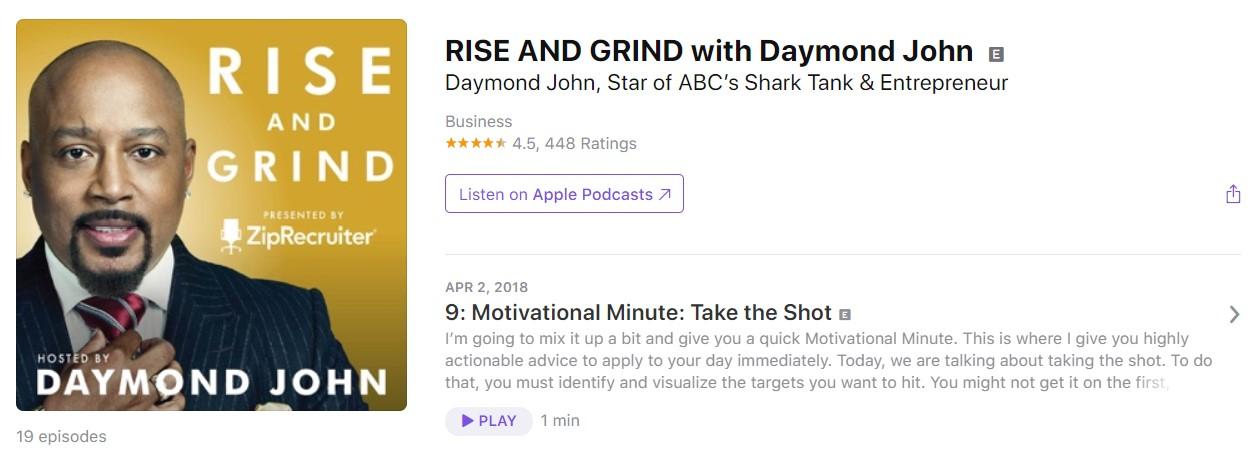
Recruitment site ZipRecruiter created a podcast, called Rise and Grind with Daymond John, in 2018 that has grown incredibly popular, receiving a 4.5 star rating on Apple Podcasts.
The podcast is hosted by Shark Tank star Daymond John and features guests from around the world—entrepreneurs, musicians, athletes and more—talking about what motivates them.
Key Takeaways
For listeners facing the daily grind, a little bit of motivation from someone who has ‘been there, done that’ is just what the doctor ordered.
ZipRecruiter’s podcast isn’t explicitly branded but it is related to what they do—job searches and career development.
When making a podcast, you don’t need to use it as a platform to promote your product or service.
Instead, give listeners some value addition by discussing subjects close to your brand but not directly related to it.
2) McAfee’s Podcast
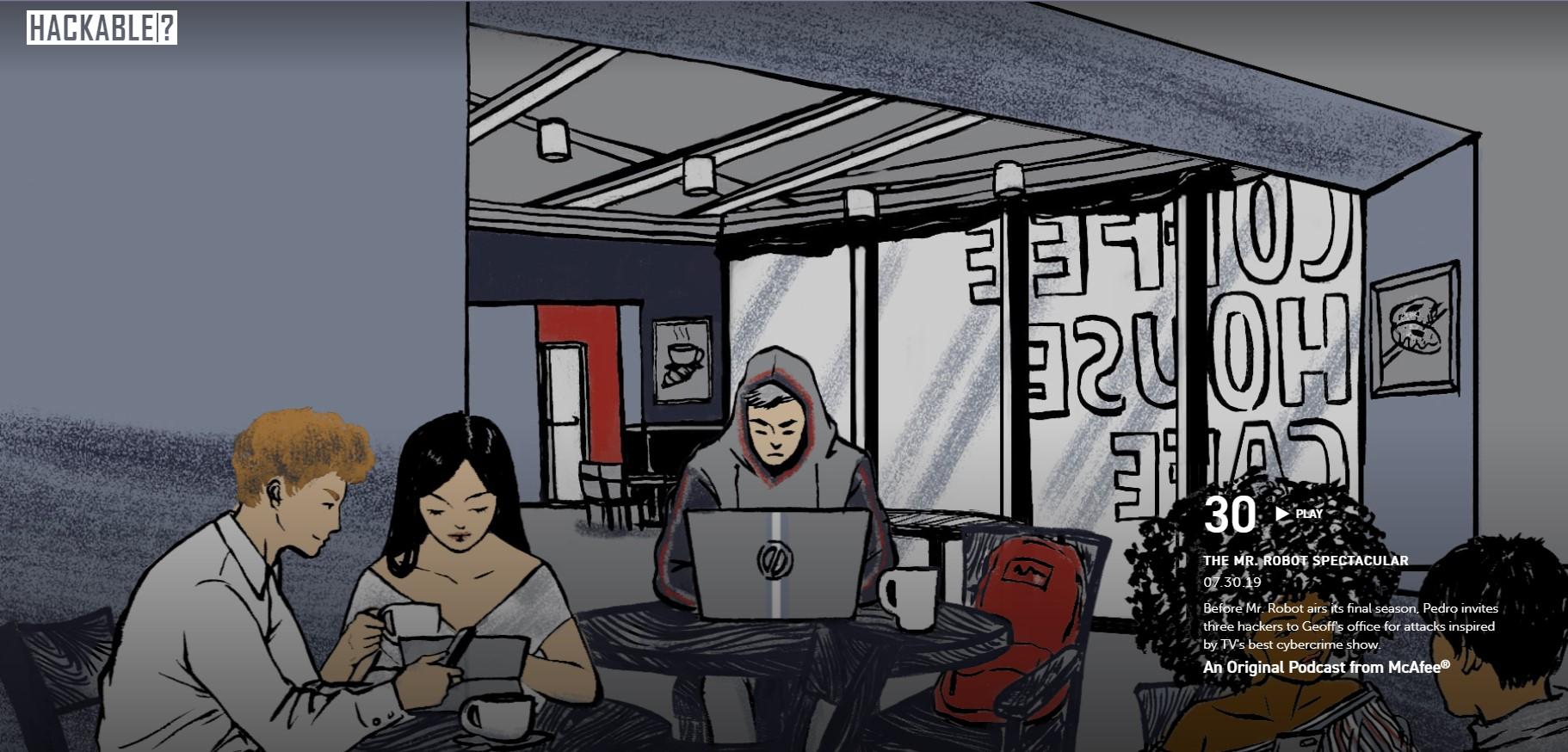
McAfee’s podcast, aptly named Hackable?, delves into how people can get hacked through the technology they use, and offers solutions to the problem.
The podcast features real hackers who share their tips and tricks for keeping yourself safe in the cyber sphere.
Key Takeaways
Like with ZipRecruiter, McAfee’s podcast isn’t directly selling its product. Instead, it exists purely to educate through real experiences and advice.
This technique encourages the customer to purchase the product because they are now aware of how unsafe their technology is.
Leverage solutions your customer needs and inform them of what could happen if they didn’t have your product.
By being subtle and informative, you increase your chances of getting through to your audience.
Social Media Marketing Examples
Social media is where content lives and breathes. In fact, most content, no matter where it is originally hosted, will end up being shared and promoted on social media.
Looking at native social media posts, there are numerous fantastic content marketing examples from top brands but we have managed to choose a select few.
These examples should give you direction and some fun ideas for your social media marketing.
1) Starbucks #ExtraShotofPride
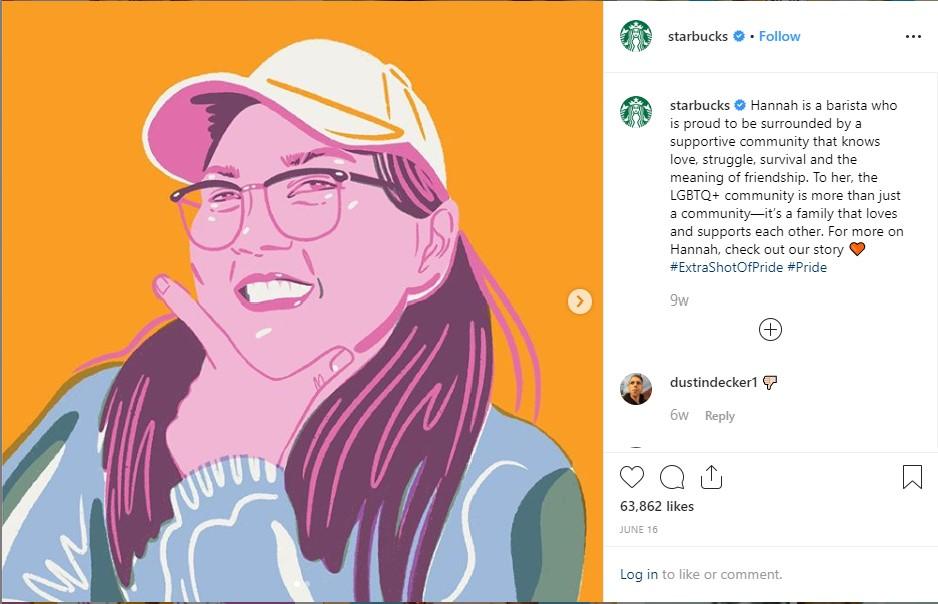
Starbucks’ Instagram page is inspiration central for all marketers. Their posts are beautiful to look at and their campaigns are generally well-produced and managed.
One of their recent campaigns that generated a lot of buzz was #ExtraShotofPride—each post received between 60K-90K likes on Instagram.
Created for the month of Pride, Starbucks featured their own staff and baristas and their journeys as LGBTQ+ individuals.
Key Takeaways
Starbucks leveraged real people and a politically empowering trend to reach its audience.
They also cemented themselves as ‘one of the people’ by sharing real life stories.
But these photos not only showed real people, they had colorful filters superimposed—another nod to Pride’s rainbow flag.
As a marketer using social media, you should be staying on-trend, but that doesn’t mean piggybacking on daily trends that will lose steam in 24 hours.
Choose a long-lasting subject that has gained popularity over the years and create content accordingly.
2) Greggs UK
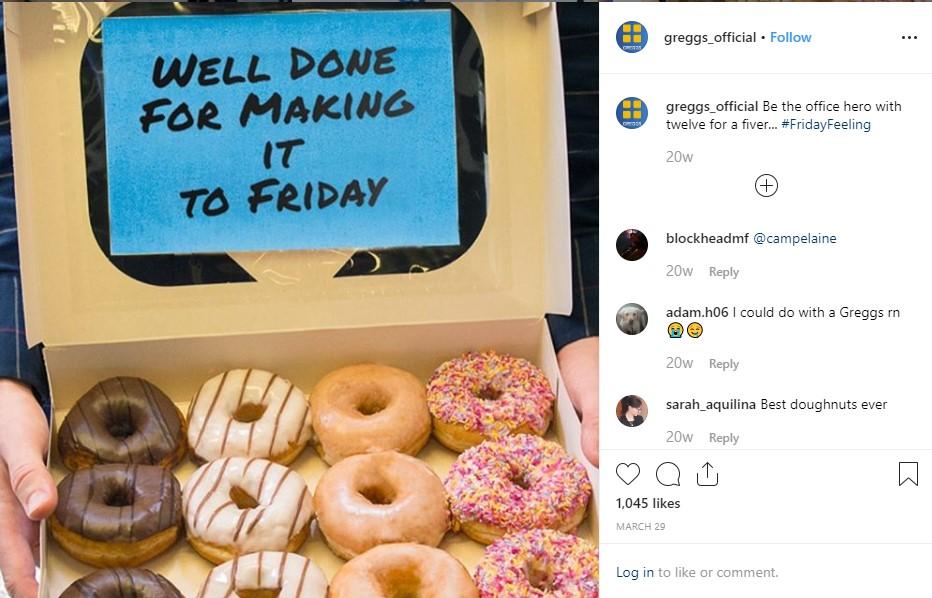
The bakery brand Greggs leverages humor in its social media marketing to keep users entertained and engaged.
Greggs aren’t afraid to poke fun at themselves, their products, or their customers, but they keep it light-hearted and never veer towards being rude.
This tactic helps Greggs earn organic social media engagement on all their posts—their posts consistently receive upwards of 1000 likes.
Key Takeaways
Greggs’ example isn’t solely about humor—it is more about capitalizing on brand voice.
Greggs is spreading awareness about themselves by having a laugh, and this is what we can learn from them.
Identify your brand voice and ensure that you use it consistently and optimally across your social media.
You needn’t be humorous—you can be educational or informative—but consistently maintain that brand voice to engage with audiences.
User-Generated Content Examples
When it comes to content creation, user-generated content is a win-win for both marketers and consumers.
For marketers, UGC saves them from having to create more content, and gives consumers the chance to be featured on a brand channel.
Marketers are adopting UGC methods across the board and we’ve found some UGC content marketing examples that prove why it’s been so effective.
1) Dove #ShowUs
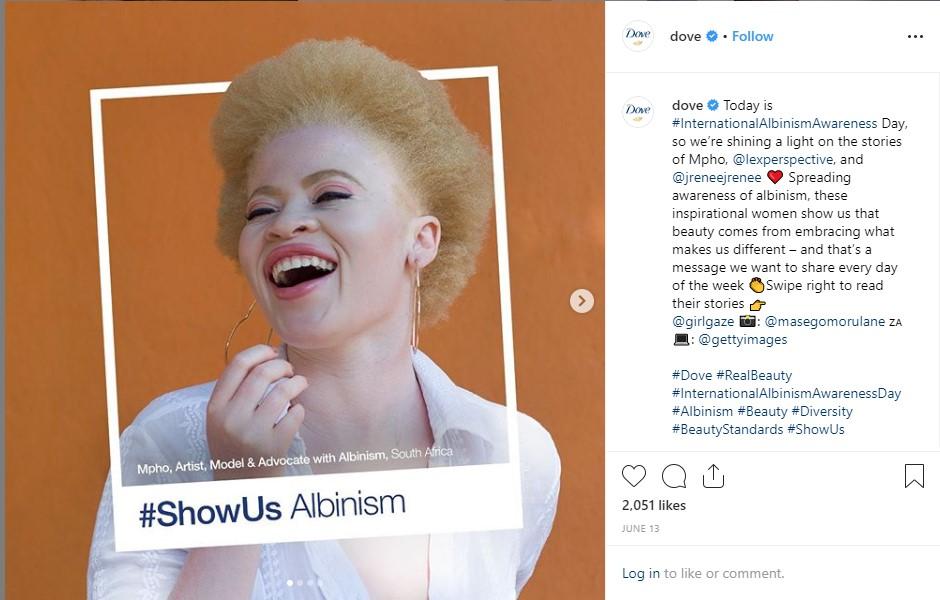
Dove has been running the #ShowUs user-generated campaign in 2019 with great results.
On Instagram, #ShowUs has over 700,000 posts from users from all over the world.
The project was started as a collaboration between Dove and Getty Images, but has since been opened up to users.
Dove gives Instagram users the option to share their photos with the hashtag for a chance to appear in the campaign.
Key Takeaways
People on social media are tired of seeing photoshopped images that hold them to unrealistic beauty standards. They want to see real people and they want to feel represented.
User-generated content is a great way to make your audience feel like they’re part of your community and that you are giving marginalized voices a chance to be heard.
Run a hashtag campaign on Instagram that will feature users on your page or on Instagram Stories and make them feel like they’re being noticed (find out about Instagram marketing here).
2) #WayfairAtHome
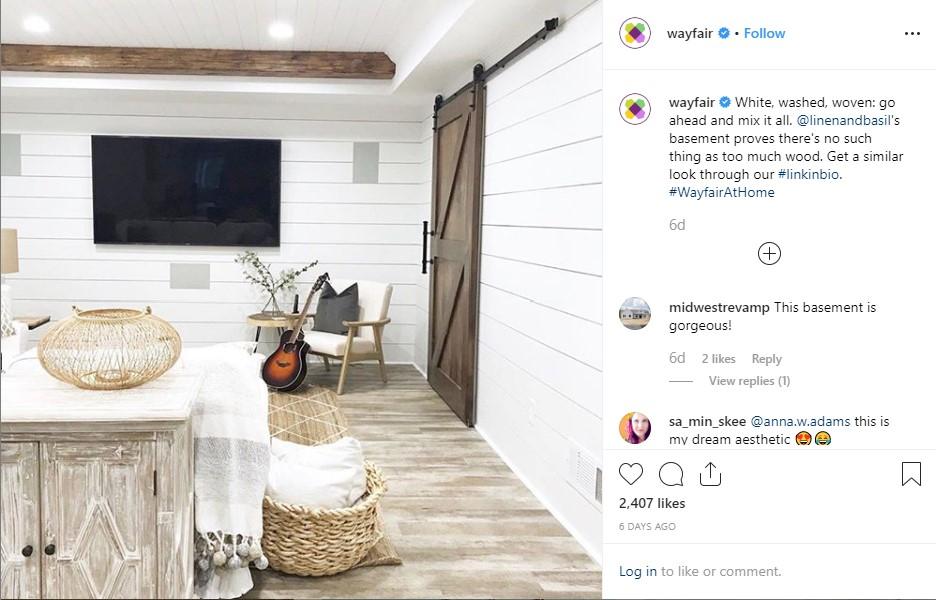
Wayfair’s UGC campaign, #WayfairAtHome, asks people to share photos of Wayfair products in their home. It’s gained almost 30,000 posts since the campaign began.
The campaign is not only a great way for people to show off their beautiful homes but Wayfair also uses the photos as an incentive to promote the products in the images.
Key Takeaways
Showing your products in use, and by real people, will massively boost sales.
While you can always talk about your product’s benefits, but nothing sells like seeing it in action.
Use FOMO to your advantage by showing people what their home could look like if they had your products.
Video Examples
Video has been taking off in the content marketing world— over 80% of web traffic comes from videos now.
Though there are so many great examples to choose from, we’ve picked three of the best video content marketing examples from recent times that will inspire your video content strategy.
1) Destination Canada
Destination Canada combined UGC and video marketing with their Found in Canada campaign.
They asked users to share photos and videos from across Canada to be post on Destination Canada’s Instagram.
But then, they went a step further.
Individually, the UGC videos were immensely popular. But to showcase the scale and grandeur of the country, Destination Canada spliced the videos together to make one epic video that generated over 1.2 million views.
Key Takeaways
Videos can be difficult to create, but you don’t need to do all the work yourself.
Take a leaf out of Destination Canada’s book and start a UGC campaign where you can gather videos and photos.
Then put the content together to make smaller videos that can be shared on other channels and hosted on your YouTube channel.
2) Gillette
https://www.youtube.com/watch?v=koPmuEyP3a0&feature=youtu.be
Gillette has been making some excellent videos in recent years, but none more so than their celebrated takedown of toxic masculinity.
In the wake of #MeToo, Gillette eagerly brushed aside the question of whether or not brands could be too political with their short film.
Not only did it earn Gillette over 31 million YouTube views, but it also brought the company a lot of positive support and praise from consumers and marketers alike.
Key Takeaways
Being political isn’t easy, but if you are able to take a stand, do it. This will require research and audience feedback, as well as a thorough understanding of your brand voice.
But the momentum your campaign will gain from a well-produced political hot topic could be immense.
3) Timberland
Timberland’s video about a virtual fitting room not only shows how brands can improve customer experiences through AR, but also how it can be used in promotions.
The video combines aspects of behind-the-scenes, gamification, and FOMO, showing a customer ‘trying out’ clothes in an enhanced AR screen in Timberland’s storefront window.
With over 265,000 YouTube views, this video was a major success for Timberland.
Key Takeaways
Timberland’s video shows how a brand can make it convenient for your customers to access their product or service, while showing the work that goes behind the experience.
Not only does Timberland’s video attract audiences on YouTube, but through the AR screen, it invites users on the ground to try out their service, and eventually, purchase their products.
Don’t be afraid to dabble in multiple genres for your video and try to engage your audience within and without the video experience.
Visual Content Marketing Examples
Visuals have become part and parcel of content marketing in 2019.
Can you think of an instance when a piece of written content has been shared without at least a featured image?
In fact, all the content marketing examples on this list have been using visual marketing .
But we want to highlight two brands that have incorporated visuals holistically and organically in their marketing.
1) Linkedin
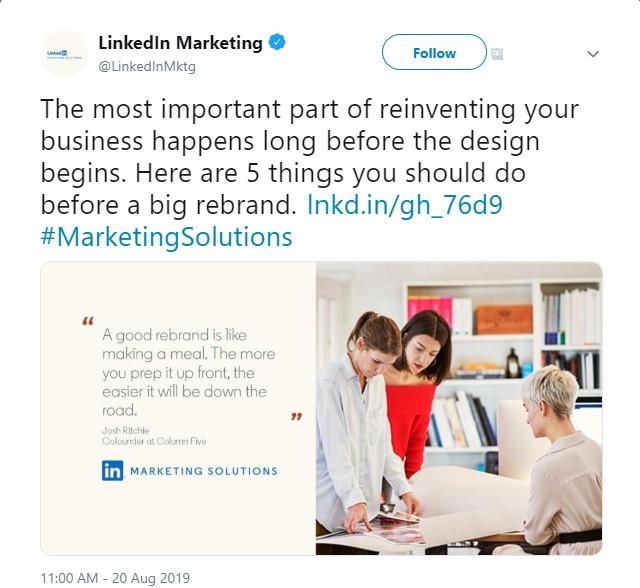
We all know LinkedIn as the business-focused social network where people go looking for jobs. But LinkedIn’s marketing is heavily visual.
They use a combination of featured images for their blogs, quotes, illustrations, videos, and infographics to promote their content and service.
And it’s worked for them—they’ve amassed almost 65K followers on Twitter.
Key Takeaways
Diversify the visuals you use in your content to keep audiences engaged and interested.
Ensure your brand is visible on your graphics but doesn’t overwhelm the visual.
Take inspiration from LinkedIn’s marketing techniques and leverage the platform for your marketing (you can read more about LinkedIn marketing here).
2) Venngage
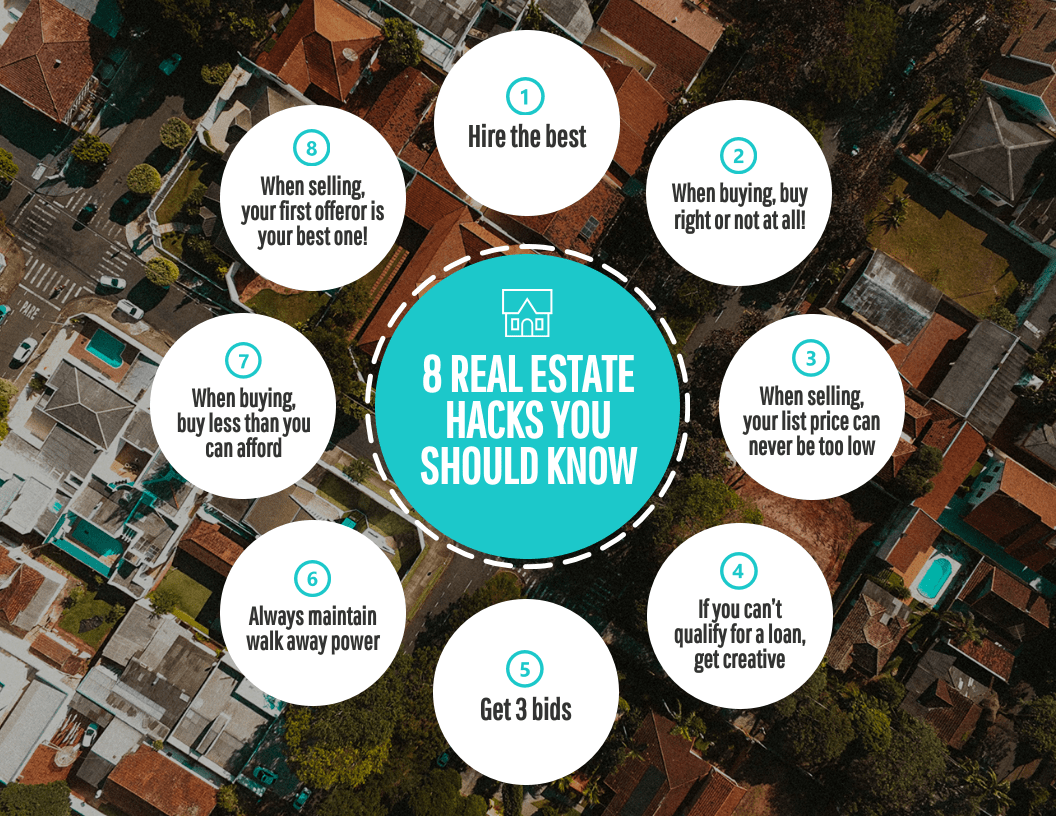
As a content marketer at Venngage, I couldn’t not mention our company as an example of visual content marketing.
Venngage is in the business of making stunning visuals—everything from infographics and charts to presentation design and social media posts—to easily share information with other users.
But creating visuals is only one part of the job—Venngage also leverages these visuals to build connections and help out the marketing community.
Venngage’s infographics have been used on numerous sites till date, and every day, more sites are interested in using our visuals in some way or form.
Key Takeaways
Use visuals as a way to make your content bite-sized and easily digestible, and as a tool to repurpose existing content.
But creating amazing visual content is one step in the marketing process. You should also be looking to leverage your visuals’ potential to go viral by sharing them with others.
Boost Your Content Marketing
These 15 content marketing examples have shown how varied digital marketing can be.
Though it isn’t possible to incorporate all these techniques into your marketing strategy, you should try and adopt a few strategies that you know you can follow through on.
Most importantly, do your research first and learn what your audience needs from you.
With that information in mind, you can work on creating content that will boost your sales and traffic.